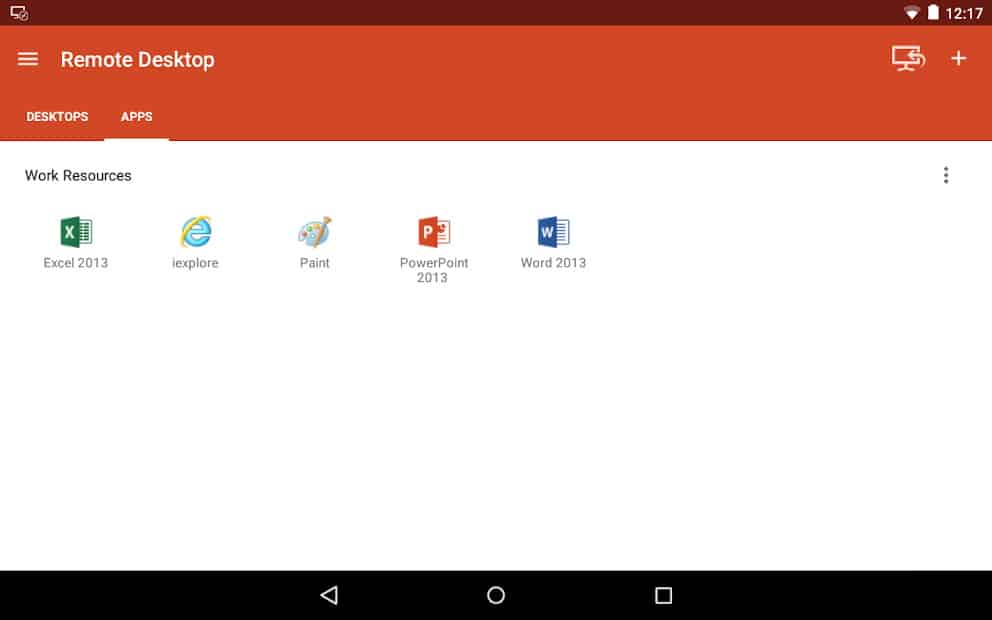Turns out, the remote desktop slow problem is a very old problem, and here is a 2007 article explaining its fix.
Remote Desktop slow problem solved Remote Desktop 6.0, the latest version of Microsoft Remote Desktop client, which comes pre-installed microsoft, RDP, Receive Window Auto-Tuning, remote access, Remote Desktop 6.0, Vista, Windows
- Microsoft Remote Desktop doesn't support Retina throughput and scales the content by changing the resolution that is advertised. You can change this by setting the resolution of your display to a non-HiDPI resolution, such as literal 2880x1800, however everything will appear tiny unless you are able to directly set the HiDPI setting on the server which you are connecting to.
- Sep 28, 2016 Change the remote desktop settings resolution color depth to use 16 bits and slow connections see screen shots below: 1. Resolution Color Depth. 2.Change the Experience configuration. Also check the wireless connectivity or network connectivity at home to check if you are using more bandwidth than usual.
- Dec 07, 2015 On the far computer, open System Preferences / Displays. Change Resolution from 'Default for display' to 'Scaled'. In the list below, select: 1600 x 1000. This change alone got me most of the improvement I see.
Sep 16, 2017 Turns out, the remote desktop slow problem is a very old problem, and here is a 2007 article explaining its fix. Remote Desktop slow problem solved Remote Desktop 6.0, the latest version of Microsoft Remote Desktop client, which comes pre-installed microsoft, RDP, Receive Window Auto-Tuning, remote access, Remote Desktop 6.0, Vista, Windows.

Source: Remote Desktop slow problem solved
What’s old is new again. I was amazed to get a support ticket the other day where a user with a brand new setup was complaining that remoting into her desktop was slow. I had just finished setting it up from scratch a couple of days before another tech deployed it on her desk. Something told me the answer must be on the machine she was using locally, but I couldn’t figure out how that could be until I read the above article.
TLDR: Use the command: netsh interface tcp set global autotuninglevel=highlyrestricted
I am running a Windows 2012 R2 servers on a VMware ESXi environment ( 6.5.0 Update 1 (Build 5969303 ) . I experience an extreme poor performance on the Windows 2012R2 server when connection with any RDP-client ( Windows and Mac )
The hardware shouldn’t be an issue.
Microsoft Remote Desktop Mac Slow Speed
- the server does not have a high overall load
- there is no high CPU load
- there is enough RAM
- there is no high I/O
This is what I did to solve the issue and get back to fast RDP-performance.
Emaxs laptops & desktops driver download for windows. 1. Finetune “Remote Desktop Services” in Group Policy
Open Group Policy Editor ( Start -> Run -> gpedit.msc )
Goto Computer Config > Windows Settings > Administrative Templates > Windows Components > Remote Desktop Services > Remote Desktop Session Host > Connections > Select RDP transport protocol = Use only TCP
You can also set this on the client side by specifying:
Computer Config > Windows Settings > Admin Templates > Windows Components > Remote Desktop Services > Remote Desktop Connection Client > Turn off UDP on Client = Enabled Ec printer printers driver download for windows.
2. Disable “DisableTaskOffload” in the Registry

I also added below registry setting to improve performance.
Algorithm driver download for windows 10. A little explanation of TCP Offloading:
“TCP offload engine is a function used in network interface cards (NIC) to offload processing of the entire TCP/IP stack to the network controller. By moving some or all of the processing to dedicated hardware, a TCP offload engine frees the system’s main CPU for other tasks. However, TCP offloading has been known to cause some issues, and disabling it can help avoid these issues.”
- Open RegEdit on the Windows Server machine.
- Navigate to this registry key in the tree on the left: HKEY_LOCAL_MACHINESYSTEMCurrentControlSetServicesTcpipParameters
- Right-click on the right side, and add a new DWORD (32-bit) Value
- Set the value name to DisableTaskOffload and the value data to 1
Microsoft Remote Desktop
Now Reconnect to the Server via RDP (to a new session) and your performance should be normal.
